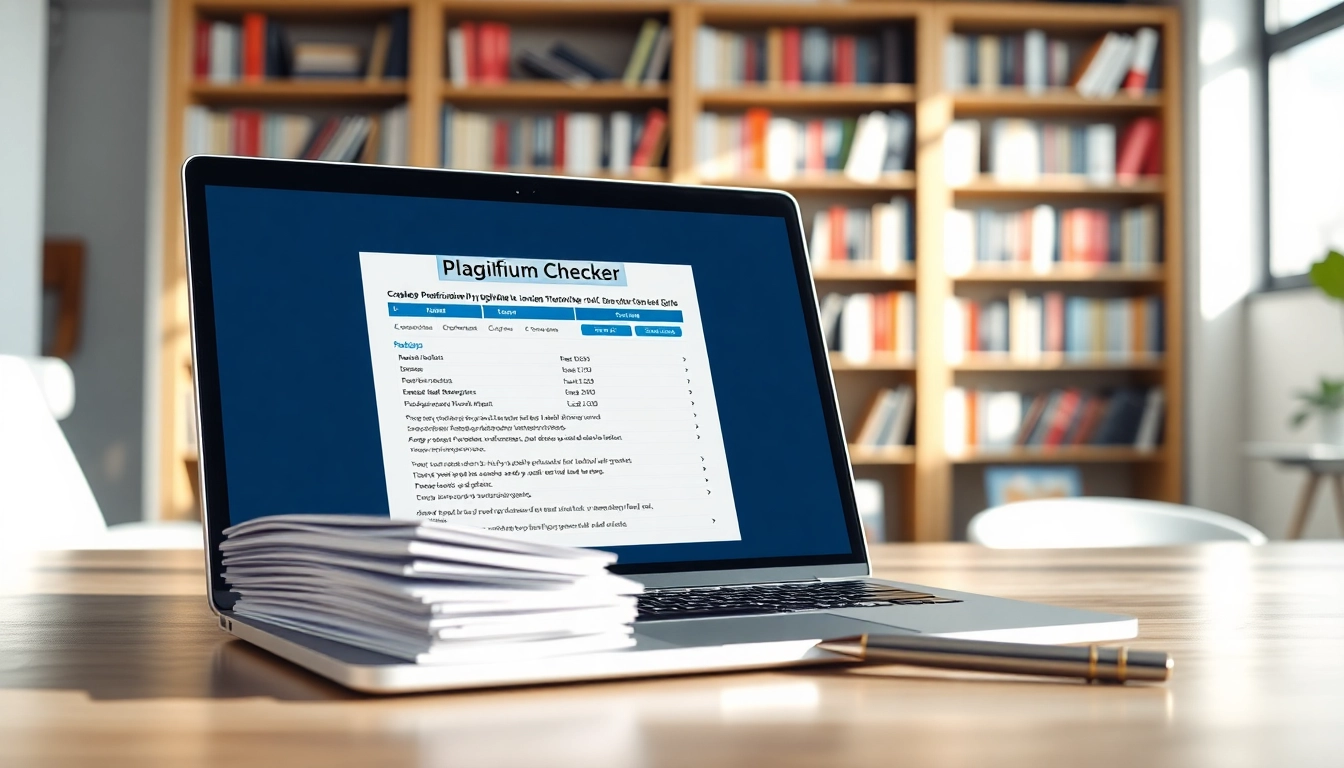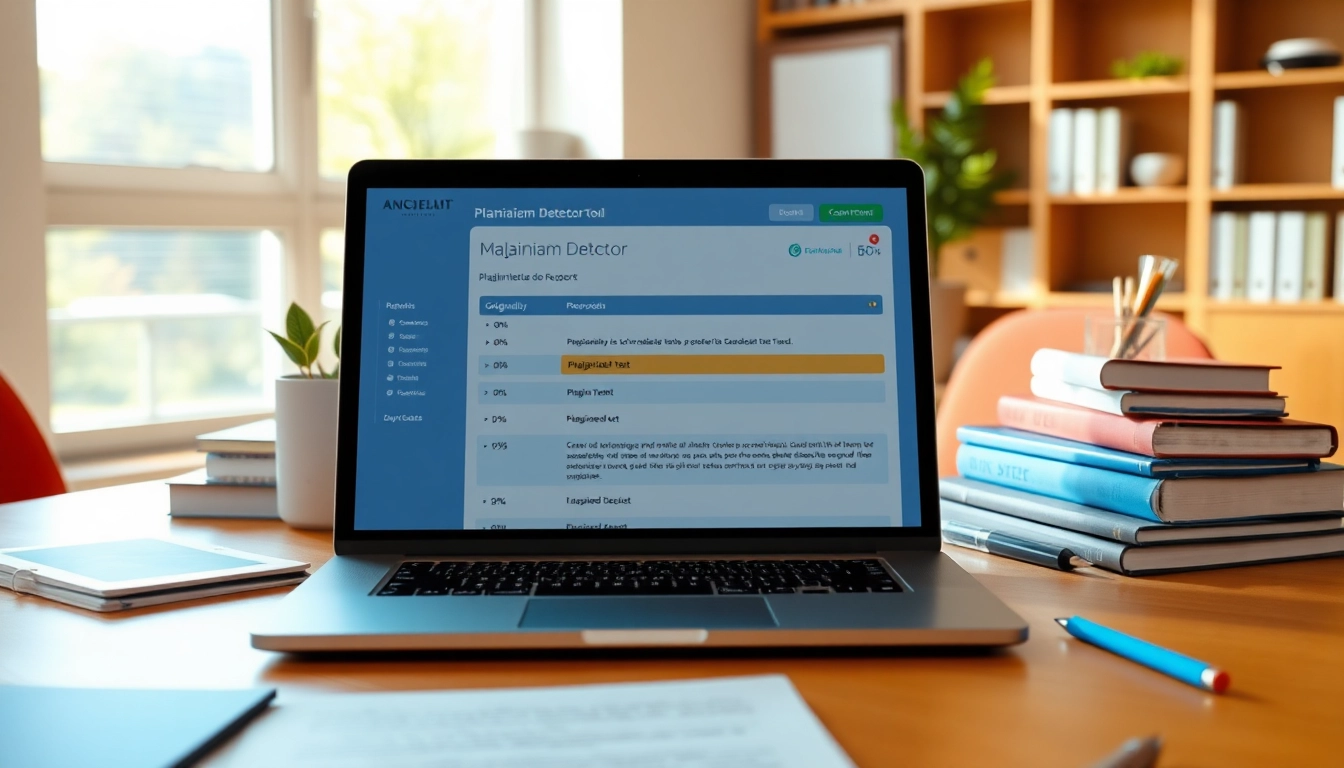Understanding Plagiarism Checker Tools
What is a plagiarism checker?
A plagiarism checker is a digital tool designed to help individuals identify instances of copied text across various sources. It functions by scanning a document and comparing its content against a vast database of published works, academic papers, and content available on the internet. The primary goal of a plagiarism checker is to ensure the originality of written material, making it an essential tool for students, educators, and content creators alike. With the increasing ease of access to information online, the challenge of maintaining academic integrity and originality has never been more critical. By utilizing a reliable plagiarism checker, users can protect their intellectual property and uphold the principles of honesty in academic and professional environments.
The importance of using a plagiarism checker
Using a plagiarism checker is crucial for several reasons. First, it helps individuals maintain academic integrity. In educational settings, students are expected to produce original work. Submission of plagiarized content can lead to severe consequences, including failing grades or expulsion. Thus, a plagiarism checker acts as a safeguard.
Furthermore, plagiarism can severely impact a writer’s reputation. Originality is the cornerstone of credibility in both academic and professional fields. Authors, scholars, and content creators are increasingly judged based on their capacity to produce unique work. A plagiarism checker can help build and protect this reputation by ensuring that no uncredited material is included in submitted documents.
Additionally, these tools can assist in understanding how to properly attribute sources, fostering better citation practices. Many checkers provide insights into detected content, leading to improved writing skills over time. This is especially beneficial for budding writers and students, as it encourages a culture of responsibility when it comes to using and citing external content.
How plagiarism checkers work
Plagiarism checkers utilize algorithms and cross-comparison techniques to analyze text. When a document is submitted, the tool breaks down the content into smaller segments, such as phrases and sentences. These segments are then matched against a comprehensive database of sources.
The process often involves the following steps:
- Text Analysis: The checker analyzes the input text for structure, vocabulary, and syntax.
- Database Comparison: It queries a database consisting of academic papers, articles, websites, and books to identify potential matches.
- Similarity Score Calculation: The tool generates a similarity score that reflects the percentage of text matching other sources.
- Report Generation: Finally, a detailed report is produced, highlighting matched content, sources, and recommendations for improvement.
Features of an Effective Plagiarism Checker
Types of plagiarism detection methods
Plagiarism checkers use various detection methods, each designed for specific types of content. Some of the most common methods include:
- String Matching: This method checks for exact matches between the input text and source documents. It is effective for detecting direct copying.
- Semantic Analysis: By examining the meaning of the text, this method identifies paraphrasing or manipulation of original content.
- Fingerprinting: This technique creates a unique fingerprint of the original text, allowing the checker to compare it against a larger corpus of work.
Key functionalities to look for
When selecting a plagiarism checker, several functionalities can enhance the user experience:
- Comprehensive Database: A robust tool should compare against a vast range of sources, including academic journals, websites, and public records.
- Error Reporting: The ability to highlight specific instances of plagiarism, with links to original sources, is vital for users.
- Customization Options: Features that allow users to customize detection parameters or thresholds can improve accuracy.
- Integration Capabilities: Compatibility with text editors and learning management systems streamline the writing and submission process.
User experience and interface design
An effective plagiarism checker should provide a user-friendly interface. An intuitive design enhances accessibility, enabling users to navigate the tool without extensive training. Key elements include:
- Simple Upload Process: Users should be able to upload files or paste text easily.
- Clear Results Presentation: Results should be presented in an organized manner, with actionable suggestions for revisions.
- Educational Resources: Providing resources on how to avoid plagiarism and improve writing can offer additional value.
How to Choose the Right Plagiarism Checker
Assessing your needs and goals
Choosing the right plagiarism checker depends on individual needs and goals. Users should consider factors such as the type of content they produce, the level of scrutiny required (academic versus professional), and budget constraints. For instance, students may prioritize affordability, while professionals may seek comprehensive results and faster processing times.
Comparing free vs. premium plagiarism checkers
Both free and premium plagiarism checkers exist in the market, each with its pros and cons:
- Free Checkers: These tools usually offer basic features. They are suitable for casual use or for individuals who need to check shorter documents. However, they may have limitations in their database size and accuracy.
- Premium Checkers: While these often come with a subscription fee, they typically provide more features, including enhanced database access, detailed reporting, and faster processing times. For serious students and professionals, the investment may be worthwhile.
User reviews and feedback
Before settling on a plagiarism checker, potential users should explore reviews and feedback from other users. Trusted review sites and forums can provide insights into the effectiveness and reliability of different tools. Examining user testimonies can shed light on the accuracy of the results, customer support quality, and overall user satisfaction.
Best Practices for Using a Plagiarism Checker
How to conduct a proper check
To ensure a plagiarism check is comprehensive, follow these best practices:
- Check Multiple Times: It’s beneficial to run the document through the check multiple times, especially after revisions. Changes in wording or phrasing might introduce new issues.
- Use Different Tools: Different tools may utilize different databases, so checking with multiple tools can provide a fuller picture.
- Review Results Carefully: Just because a text segment is flagged doesn’t mean it’s plagiarized. Evaluate the context and make informed decisions.
Interpreting the plagiarism report
Understanding the results presented by a plagiarism checker is essential for effective remediation. A user should familiarize themselves with the format of the report. Typically, reports highlight:
- Percentage of the text that appears to be plagiarized.
- Links to original sources for matched content.
- Areas that require citation or rewriting.
Having a clear approach to interpreting these indicators can assist users in addressing issues promptly.
Steps for revising and citing sources
Once the report has been reviewed, users can begin the process of revision. Effective steps include:
- Paraphrasing: Rewrite flagged sections in your own words, ensuring that the underlying idea is still communicated.
- Quoting and Citing: If specific phrases are essential and cannot be paraphrased, utilize quotations and proper citation methods to give credit to authors.
- Consulting Reference Tools: Use citation guides or tools to format references according to the required style (e.g., APA, MLA).
Future of Plagiarism Checkers
Emerging technologies in plagiarism detection
The landscape of plagiarism detection continues to evolve with the advancement of technology. Future plagiarism checkers may incorporate more sophisticated algorithms, providing more nuanced analysis capabilities. For instance, machine learning techniques could allow tools to become better at recognizing paraphrasing and even understanding the context of the content, leading to more accurate assessments.
The role of AI in improving accuracy
Artificial Intelligence (AI) is set to play a transformative role in the effectiveness of plagiarism checkers. By employing natural language processing, AI can analyze the context and intent of writing rather than simply checking for direct matches. This development would enhance the accuracy of plagiarism detection, allowing for better differentiation between legitimate and illegitimate uses of source material.
Impact on academic writing standards
The advancements in plagiarism detection tools have broader implications for academic integrity and writing standards. As educational institutions continue to emphasize the importance of original work, the rise of sophisticated plagiarism checkers can contribute to a culture of integrity. Students, knowing they can easily be held accountable for plagiarism, may be encouraged to develop stronger research and writing skills.
In conclusion, plagiarism checkers are invaluable tools for maintaining originality and credibility. As technology continues to advance, their roles will evolve, providing more robust solutions for users across various sectors. Adopting best practices and staying informed about emerging technologies will empower individuals to harness these tools effectively, ensuring their work adheres to the highest standards of originality.



